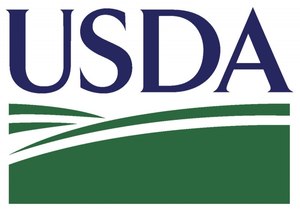
The USDA’s Fresh Fruit and Vegetable Program requires incorporating nutritional lessons while offering a variety of fresh produce in school.
The United States Department of Agriculture (USDA) is changing the way children see fruits and vegetables in schools by offering a competitive fresh fruit and vegetable program grant that provides healthy snacks along with nutrition lessons.
We teach our children from a young age that fruits and vegetables will make them tall and strong, yet, when they enter school, they are often only given two to three unappealing canned choices in the cafeteria. My daughter got in trouble at school at a young age for refusing to eat the canned peas that the cafeteria made and was not allowed to play at recess. Children should not be forced to eat nor be punished for not wanting to eat unhealthy canned foods that many adults refuse to eat.
The focus of the Fresh Fruit and Vegetable Program (FFVP) is to bring free, fresh produce into the school for distribution to children. The FFVP shows children that fresh fruits and vegetables are healthy and tasty alternatives to snacks high in fat, sugar or salt.
For too many children, the produce they see in school might be their first exposure to fresh fruits and vegetables, and the only ones they see that day. The FFVP introduces school children to new and different fresh fruits and vegetables, like kiwi, starfruit, pomegranate, rutabaga and kohlrabi — a variety of produce that they otherwise might not have had the opportunity to sample.
Fruits and vegetables are good low‐calorie, low‐fat sources of:
While the program is an effective and creative way of introducing fresh fruits and vegetables as healthy snack options, it also encourages schools to develop partnerships at the state and local level for support in implementing and operating the program (i.e. community food banks).
The goals of the FFVP are:
Many schools within the program serve fruits and vegetables multiple times during the school day so students have more access to fruits and vegetables. Fruits and vegetables may only be served during the school day outside of normal mealtimes (i.e. recess); this provides an opportunity to incorporate a nutrition lesson along with the service of produce.
Schools can offer the FFVP to children as part of nutrition education activities and through a variety of distribution methods, such as in:
The FFVP’s nutrition education component is critical to the program’s success. Providing nutrition education can help schools reach their goal of a healthier school environment by helping to combat childhood obesity and is a component of several important agency programs and initiatives. These include a school’s wellness policy, becoming a Team Nutrition School and meeting the HealthierUS School Challenge.
The program also sends a monthly newsletter to schools and families with great wellness tips, like this list from a May 2019 newsletter – 10 Keys to Health and Nutrition for Life:
USDA accepts applications once per year — in the spring — for the upcoming school year. Schools must meet the following criteria in order to apply for the Fresh Fruit and Vegetable Program:
Learn more about the FFVP in the USDA’s online resource center for the program.
Copyright © 2024 GovGrantsHelp.com. All rights reserved.
